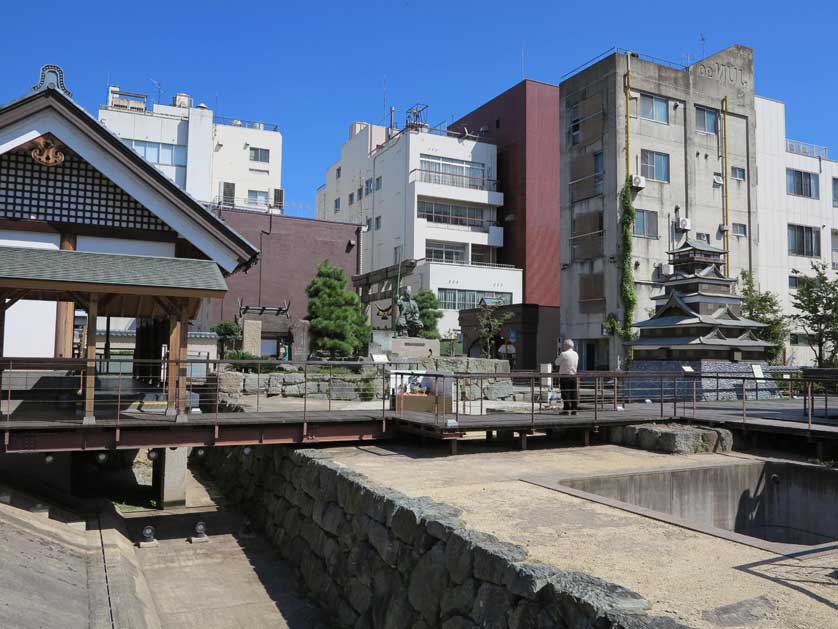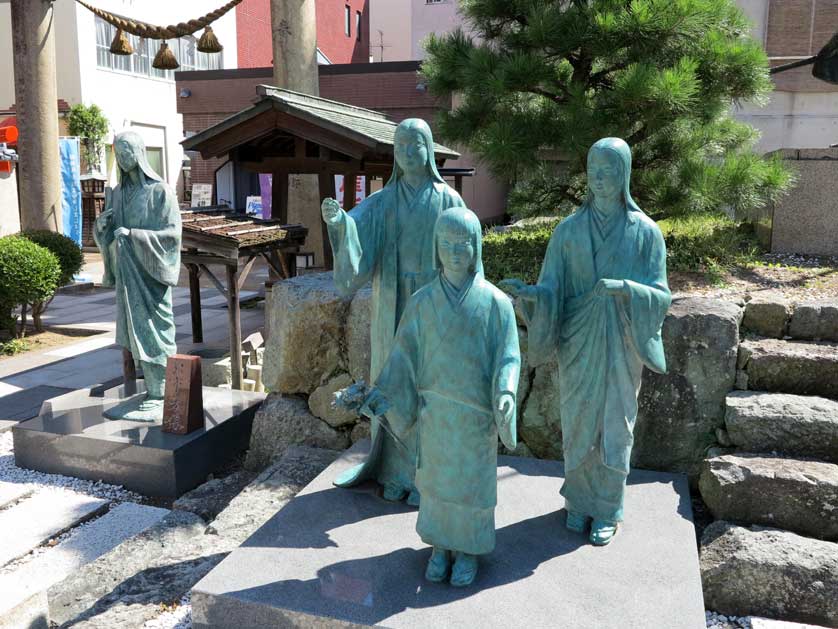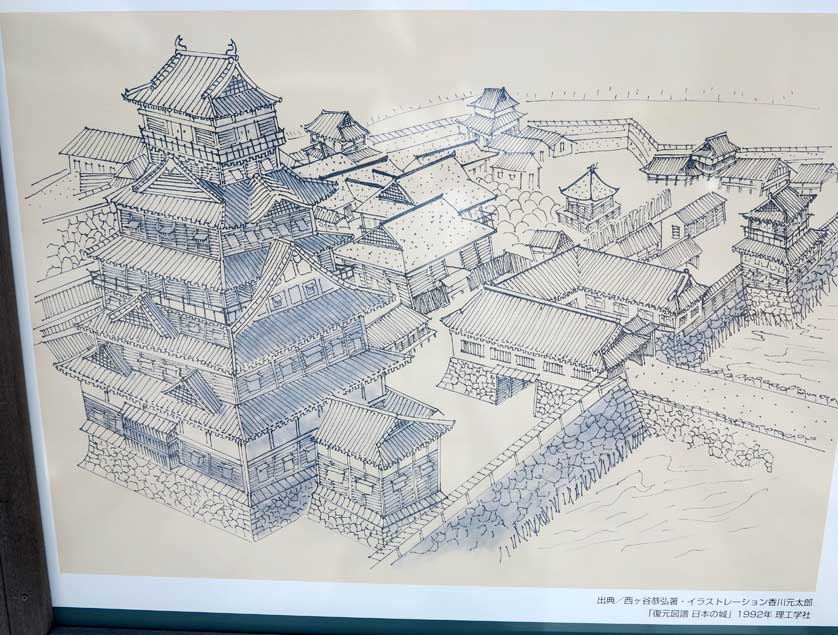Kitanosho Castle
Kitanosho Castle: read a guide to Kitanosho Castle in Fukui city, built in 1575 by Shibata Katsuie and burnt down by him at his death in 1583.
Kitanosho Castle Ruins 北圧城
The most famous castle in Fukui City is the ruined Fukui Castle; however Kitanosho Castle is another ruined castle worth visiting in Fukui City, located a short walk south from Fukui Station.
The site of the former castle is now known as Kitanosho Joshi Park and includes the Shibata Shrine.
 Statue of warlord Shibata Katsuie, Kitanosho Castle, Fukui, Fukui Prefecture
Statue of warlord Shibata Katsuie, Kitanosho Castle, Fukui, Fukui Prefecture
Kitanosho Castle History
Kitanosho Castle was built in 1575 by Shibata Katsuie (1522-1583), a Nagoya-born general of warlord Oda Nobunaga. Kitanosho Castle supposedly had a tenshu (keep) of none stories, making it the largest in Japan at the time.
After Nobunaga's death at Honnoji Temple in 1582 in Kyoto, following a surprise attack by one of his own commanders, Akechi Mitsuhide, a conflict broke out between Toyotomi Hideyoshi, another of Nobunaga's warriors and Nobunaga's third son, Nobutaka, over control of the territories in central Japan once controlled by Nobunaga.
Shibata's Katsuie's forces under the command of Sakuma Morimasa were defeated at the Battle of Shizugatake near Lake Biwa in what is now Shiga Prefecture. The battle site on Shizugatake Peak is now part of a hiking trail along Uminobe-no-michi.
Shibata's forces retreated to Kitanosho Castle, but vastly outnumbered, Shibata committed seppuku and burnt down the castle. His loyal wife Oichi, a sister of Nobunaga, who was married to him just a year earlier, chose to join her husband in death rather than flee, though her three daughters through a previous marriage, Chacha, Hatsu and Go, did survive. The three sisters were to go on to become famous historical figures in their own right.
 Kitanosho Joshi Park and Shibata Shrine, Fukui, Fukui Prefecture
Kitanosho Joshi Park and Shibata Shrine, Fukui, Fukui Prefecture Statues of Chacha, Hatsu and Go, Kitanosho Castle, Fukui, Fukui Prefecture
Statues of Chacha, Hatsu and Go, Kitanosho Castle, Fukui, Fukui Prefecture
Chacha (aka Yodo) became a concubine of Hideyoshi, dying in the Siege of Osaka Castle in 1616, with their only son and heir Hideyori. Hatsu married Kyogoku Takatsugu, an ally of Tokugawa Ieyasu and helped to save Hideyori's daughter after the massacre of the Toyotomi clan at Osaka Castle. Go married Tokugawa Hidetada, Ieyasu's heir and later the second Tokugawa shogun of the Edo Period.
Recent excavations at Kitanosho Castle have revealed some sparse remains of the original walls and statues have been erected of Shibata and Oichi, as well as the three children. A scale model of the original castle also stands at the site, which is illuminated at night.
 Ema showing Shibata Katsuie, at Kitanosho Castle in Fukui Prefecture
Ema showing Shibata Katsuie, at Kitanosho Castle in Fukui Prefecture
Kitanosho Castle
1-21-17 Chuo, Fukui, 910-0006
Admission: Free
Google map
Access To Fukui - how to get to Kitanosho Castle
Fukui Station is on the JR Hokuriku Line from Maibara Station in Shiga Prefecture to Naoetsu Station in Niigata Prefecture.
From Nagoya take a Hikari shinkansen bullet train to Maibara and change (1 hour, 43 minutes) or a direct Shirasagi Express (2 hours, 10 minutes).
From Kyoto there are Thunderbird Express trains taking about 80 minutes to Fukui.
There are express highway buses from Nagoya Station to Fukui Station taking about 3 hours.
Kitanosho Castle is a 5-10 minute walk south from Fukui Station on Jonohashi Dori opposite the Hotel Sonosada.
Fukui Prefecture's best castle is Maruoka Castle, one of the dozen original castle's still left in Japan.
Other castles in the Chubu area include Gifu Castle, Kiyosu Castle, Nagoya Castle, Okazaki Castle and Inuyama Castle.
 Kitanosho Castle, Fukui city, Fukui Prefecture
Kitanosho Castle, Fukui city, Fukui Prefecture Plan of the original Kitanosho Castle, Fukui city, Fukui Prefecture
Plan of the original Kitanosho Castle, Fukui city, Fukui Prefecture
















